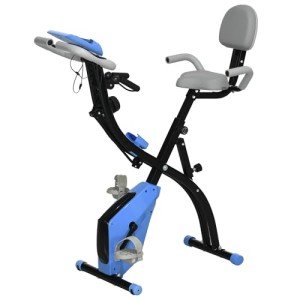Exercise Cycle Home: A Comprehensive Guide to Fitness in the Comfort of Your Space
In the ever-evolving landscape of fitness, the home exercise cycle has emerged as a flexible and reliable tool for maintaining physical health and psychological wellness. As more people seek convenient and accessible methods to remain in shape, the exercise cycle has actually ended up being a popular choice for those who choose the convenience and personal privacy of their own homes. This short article delves into the benefits, types, and pointers for utilizing an exercise cycle in the house, together with some regularly asked concerns to help you make a notified decision.
The Benefits of Using an Exercise Cycle in the house
Convenience and Accessibility
- Among the most substantial benefits of owning an exercise cycle is the benefit it uses. You can exercise anytime, despite the weather condition or your schedule. This makes it much easier to maintain a constant fitness routine without the requirement to travel to a gym.
Cost-efficient
- While the initial investment in an exercise cycle might appear high, it can be more economical in the long run compared to gym subscriptions and travel expenses. Additionally, numerous cycles included features that can change the need for multiple tools.
Low-Impact Exercise
- Cycling is a low-impact activity, making it appropriate for people of any ages and fitness levels. It is particularly useful for those with joint pain or injuries, as it provides a gentle method to remain active without putting extreme stress on the body.
Cardiovascular Health
- Routine cycling can improve cardiovascular health by reinforcing the heart and lungs. It helps to lower blood pressure, minimize the threat of heart problem, and improve total endurance.
Mental Health Benefits
- Exercise, in general, is known to enhance mental health by lowering stress, stress and anxiety, and depression. Cycling, in specific, can be a meditative and enjoyable activity, providing a sense of accomplishment and wellness.
Types of Exercise Cycles
Upright Bikes
- Upright bikes are the most common type of exercise cycle and carefully look like traditional bicycles. They use a variety of resistance levels and are appropriate for a large variety of workouts, from gentle pedaling to intense period training.
Recumbent Bikes
- Recumbent bikes feature a reclined seating position and are often suggested for individuals with back pain or those who prefer a more relaxed workout. They offer outstanding support and are much easier on the joints.
Spin Bikes
- Spin bikes are designed for high-intensity workouts and are frequently utilized in spin classes. They feature heavy flywheels and adjustable resistance, permitting a more vibrant and tough ride.
Smart Bikes
- Smart bikes are connected to the internet and can stream live or on-demand classes. They typically feature interactive functions, such as virtual routes and performance tracking, making the workout experience more engaging and encouraging.
Tips for Using an Exercise Cycle at Home
Establish Your Space
- Choose a well-ventilated location with sufficient area to move the bike. Make sure the flooring is stable and think about using a mat to safeguard it from sweat and vibrations.
Change the Bike
- Properly adjust the seat height and handlebars to ensure a comfy and ergonomic position. The seat needs to be level, and your legs need to be somewhat bent at the bottom of the pedal stroke.
Heat up and Cool Down
- Always begin with a 5-10 minute warm-up at a low resistance to prepare your muscles and joints. Likewise, cool off with a mild trip and stretching to prevent tightness and soreness.
Stay Hydrated
- Keep a water bottle within reach and drink routinely during your workout to remain hydrated. This is particularly important for longer or more extreme sessions.
Mix Up Your Workouts
- To avoid dullness and plateaus, vary your workouts by integrating different resistance levels, periods, and periods. Consider utilizing Exercise Bike Sales or online classes to keep your regular fresh and difficult.
Often Asked Questions (FAQs)
Q: How typically should I use an exercise cycle?
- A: The frequency of your exercises depends upon your fitness objectives and schedule. For basic health and wellness, goal for 3-5 sessions each week, each lasting 20-60 minutes.
Q: Can I drop weight with an exercise cycle?
- A: Yes, cycling can be an effective way to burn calories and reduce weight. Combine it with a balanced diet and other types of exercise for the best results.
Q: Are exercise cycles suitable for all fitness levels?
- A: Yes, exercise cycles can be gotten used to accommodate different fitness levels. Novices can begin with low resistance and shorter periods, while more innovative users can increase the intensity and period of their workouts.
Q: How do I pick the ideal exercise cycle?
- A: Consider your fitness goals, spending plan, and offered space. Upright bikes are versatile and space-efficient, recumbent bikes are more comfy, and spin bikes are ideal for high-intensity exercises. Smart bikes provide the added benefit of connectivity and interactive functions.
Q: How do I preserve my exercise cycle?
- A: Regular upkeep is vital to make sure the longevity and performance of your bike. Tidy it after each use, lubricate the chain (if suitable), and examine for any loose parts or signs of wear and tear.
An exercise cycle is a valuable addition to any home gym, using a hassle-free, cost-effective, and flexible method to remain fit. Whether you are a fitness lover or a beginner, there is an exercise cycle that can fulfill your needs and assist you attain your health and wellness objectives. By following the tips and guidelines laid out in this post, you can make the most of your home cycling experience and enjoy a much healthier, happier life.

